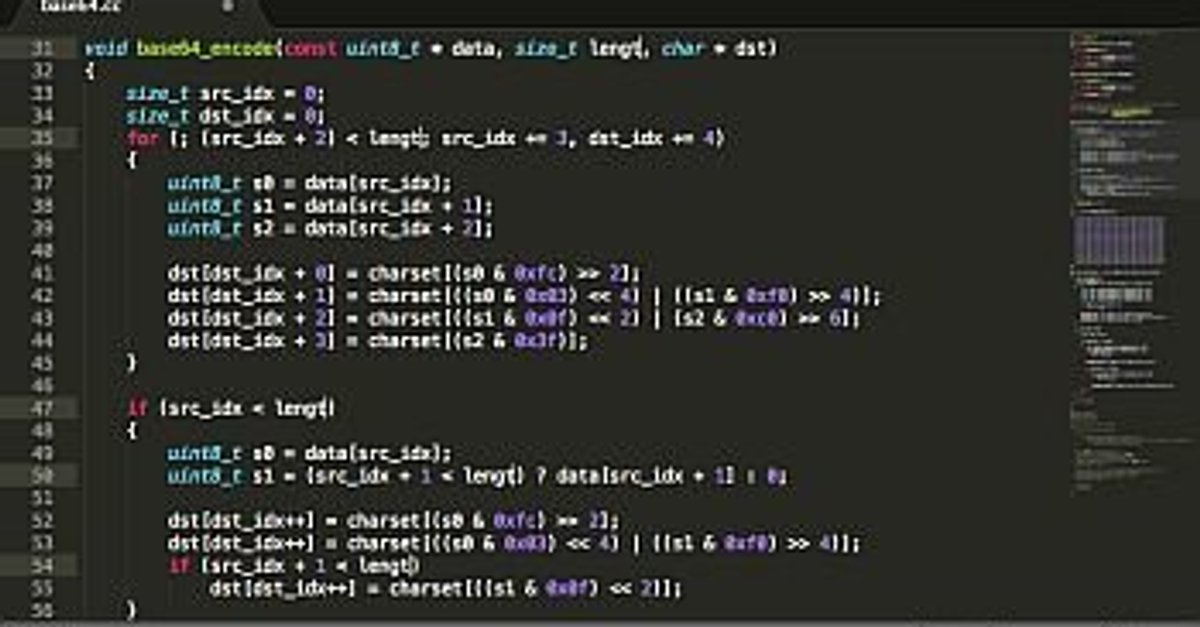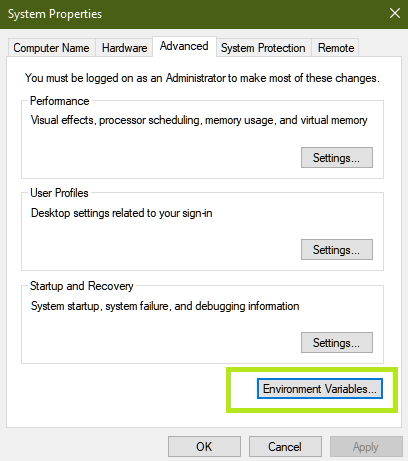- Mac Sublime Text 3 C++ 配置
- Sublime Text Package C Language
- Sublime Text C++ Code Completion
- C Compiler For Sublime Text
Sublime Text is one of the more popular text and code editors out there – and it’s easy to see why. The app makes life easier for programmers with features like the ability to select multiple instances of the same string (like a PHP variable, for example), powerful search that lets you open up a file and jump to the exact spot you’re looking for and the ability to customize just about. The package 'LSP' is an acronym for L anguage S erver P rotocol. This is a specification for the communication protocol for use between text editors or IDEs and language servers - tools which provide language-specific features like autocomplete, go to definition, or documentation on hover. This package acts as an interface between Sublime Text.
New instructions: https://chromium.googlesource.com/chromium/src/+/master/docs/sublime_ide.mdContents
- 9 Example plugin
Contents
- 9 Example plugin
Run C in Sublime Text 3 on Mac OSX. I know there is a built in C compiler and run plugin for ST3. This builds my program just fine. Running the code, it runs the first part in its console, but stops at the first cin. The code runs fine when I run the file compiled in ST3 straight from the terminal.
What is Sublime Text?
- Project support.
- Theme support.
- Works on Mac, Windows and Linux.
- No need to close and re-open during a
gclient sync. - Supports many of the great editing features found in popular IDE's like Visual Studio, Eclipse and SlickEdit.
- Doesn't go to lunch while you're typing.
- The UI and keyboard shortcuts are pretty standard (e.g. saving a file is still Ctrl+S on Windows).
- It's inexpensive and you can evaluate it (fully functional) for free.
Installing Sublime Text 2
Preferences
'tab_size': 2,Project files
'folders':{}}'folders':{'name': 'src','*.vcproj','*.sln','*.gitmodules',], 'build', 'third_party', 'Debug',]]Navigating the project
- 'Goto Anything' or Ctrl+P is how you can quickly open a file or go to a definition of a type such as a class. Just press Ctrl+P and start typing.
- Open source/header file: If you're in a header file, press Alt+O to open up the corresponding source file and vice versa. For more similar features check out the Goto->Switch File submenu.
- 'Go to definition': Right click a symbol and select 'Navigate to Definition'. A more powerful way to navigate symbols is by using the Ctags extension and use the Ctrl+T,Ctrl+T shortcut. See the section about source code indexing below.
Enable source code indexing
- Install the Sublime Package Control package: https://packagecontrol.io/installation
- Install Exuberant Ctags and make sure that ctags is in your path: http://ctags.sourceforge.net/
- On linux you should be able to just do: sudo apt-get install ctags
- Install the Ctags plugin: Ctrl+Shift+P and type 'Package Control: Install Package'
- Create a batch file (e.g. ctags_builder.bat) that you can run either manually or automatically after you do a gclient sync:This takes a couple of minutes to run, but you can work while it is indexing.
ctags --languages=C++ --exclude=third_party --exclude=.git --exclude=build --exclude=out -R -f .tmp_tags & ctags --languages=C++ -a -R -f .tmp_tags third_partyplatformsdk_win8 & ctags --languages=C++ -a -R -f .tmp_tags third_partyWebKit & move /Y .tmp_tags .tags - Edit the CTags.sublime-settings file for the ctags plugin so that it runs ctags with the above parameters. Note: the above is a batch file - don't simply copy all of it verbatim and paste it into the CTags settings file :-)
Windows: git config --global core.excludesfile %USERPROFILE%.gitignore
Mac, Linux: git config --global core.excludesfile ~/.gitignoreBuilding with ninja
'cmd': ['ninja', '-C', 'outDebug', 'chrome.exe'],Mac Sublime Text 3 C++ 配置
'file_regex': '^[./]*([a-z]?:?[w./]+)[(:]([0-9]+)[):,]([0-9]+)?[:)]?(.*)$'Sublime Text Package C Language


You can also add build variants so that you can also have quick access to building other targets like unit_tests or browser_tests. You build description file could look like this:
And keep using 'ctrl+b' for a regular, 'chrome.exe' build. Enjoy!
Example plugin
import subprocessclass RunLintCommand(sublime_plugin.TextCommand): command = ['cpplint.bat', self.view.file_name()]Sublime Text C++ Code Completion
stdout=subprocess.PIPE, print process.communicate()[1] { }D:srccgitsrccontentbrowserbrowsing_instance.cc:69: Add #include <string> for string [build/include_what_you_use] [4]Done processing D:srccgitsrccontentbrowserbrowsing_instance.cc['__class__', '__delattr__', '__dict__', '__doc__', '__format__', '__getattribute__', '__hash__', '__init__', '__len__', '__module__', '__new__', '__reduce__', '__reduce_ex__', '__repr__', '__setattr__', '__sizeof__', '__str__', '__subclasshook__', '__weakref__', 'add_regions', 'begin_edit', 'buffer_id', 'classify', 'command_history', 'em_width', 'encoding', 'end_edit', 'erase', 'erase_regions', 'erase_status', 'extract_completions', 'extract_scope', ... <snip>C Compiler For Sublime Text
Compile current file using Ninja
As a more complex plug in example, look at the attached python file: compile_current_file.py. This plugin will compile the current file with Ninja, so will start by making sure that all this file's project depends on has been built before, and then build only that file.
First, it confirms that the file is indeed part of the current project (by making sure it's under the <project_root> folder, which is taken from the self.view.window().folders() array, the first one seems to always be the project folder when one is loaded). Then it looks for the file in all the .ninja build files under the <project_root>out<target_build>, where <target_build> must be specified as an argument to the compile_current_file command. Using the proper target for this file compilation, it starts Ninja from a background thread and send the results to the output.exec panel (the same one used by the build system of Sublime Text 2). So you can use key bindings like these two, to build the current file in either Debug or Release mode:

{ 'keys': ['ctrl+f7'], 'command': 'compile_current_file', 'args': {'target_build': 'Debug'} }, { 'keys': ['ctrl+shift+f7'], 'command': 'compile_current_file', 'args': {'target_build': 'Release'} },
If you are having trouble with this plugin, you can set the python logging level to DEBUG in the console and see some debug output.
Format selection (or area around cursor) using clang-format
Miscellaneous tips
- To synchronize the project sidebar with the currently open file, right click in the text editor and select 'Reveal in Side Bar'. Alternatively you can install the SyncedSideBar sublime package (via the Package Manager) to have this happen automatically like in Eclipse.
- If you're used to hitting a key combination to trigger a build (e.g. Ctrl+Shift+B in Visual Studio) and would like to continue to do so, add this to your Preferences->Key Bindings - User file:
- { 'keys': ['ctrl+shift+b'], 'command': 'show_panel', 'args': {'panel': 'output.exec'} }
- Install the Open-Include plugin (Ctrl+Shift+P, type:'Install Package', type:'Open Include'). Then just put your cursor inside an #include path, hit Alt+D and voila, you're there.
- If you want to take that a step further, add an entry to the right-click context menu by creating a text file named 'context.sublime-menu' under '%APPDATA%Sublime Text 2PackagesUser' with the following content:
[ { 'command': 'open_include', 'caption': 'Open Include' } ]
- Open Command Palette (Ctrl-Shift-P)
- Type 'Package Control: Install Package' (note: given ST's string match is amazing you can just type something like 'instp' and it will find it :-)).
- Case Conversion (automatically swap casing of selected text -- works marvel with multi-select -- go from a kConstantNames to ENUM_NAMES in seconds)
- CTags (see detailed setup info above).
- Git
- Open-Include
- Text Pastry (insert incremental number sequences with multi-select, etc.)
- Wrap Plus (auto-wrap a comment block to 80 columns with Alt-Q)



